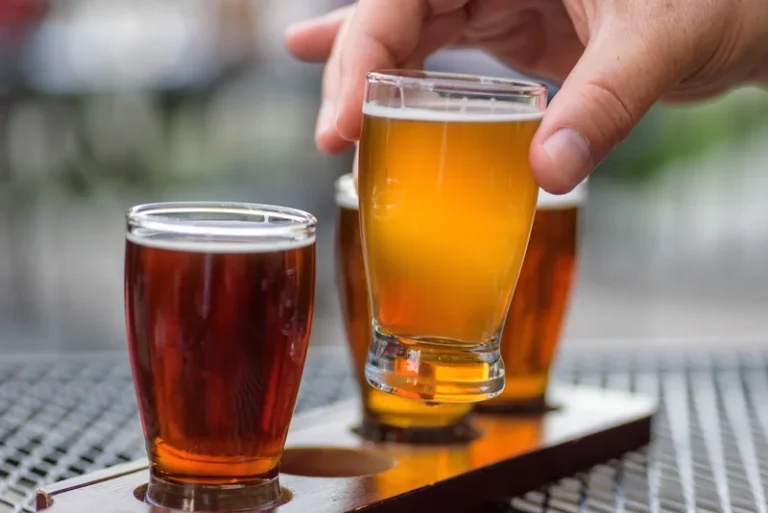
Alcoholism, a chronic disease characterized by a loss of control over drinking and changes in brain regions, necessitates comprehensive treatment approaches. Recent advancements in understanding the molecular targets for alcohol use disorder (AUD) have led to the development of innovative pharmacological treatments. These include medications like aripiprazole, which affects dopamine and serotonin receptors, alpha-1 blockers such as prazosin and doxazosin, and neurokinin-1 antagonists. Other promising pharmacological approaches involve glucocorticoid receptor blockers, vasopressin receptor 1b antagonism, and oxytocin, among others. Addressing alcohol abuse requires a multifaceted approach, combining psychosocial interventions, pharmacotherapy, and support systems. Psychosocial treatments, such as cognitive-behavioral therapy (CBT), are widely used and focus on altering drinking behavior through skill development and coping strategies.
What is Alcohol Use Disorder (formerly Alcoholism)?
AUD has been what is the difference between alcohol abuse and alcoholism used as the official diagnostic term since 2013, when the DSM-5 updated its criteria (5). There are many signs of alcohol use disorder, but you will know your loved one has developed this condition if you can no longer get through the day or week without drinking. According to the CDC, most people who drink too much are not alcohol-dependent, and 9 out of 10 adults engaging in alcohol abuse do not have alcohol dependence or alcoholism.

Understanding Alcohol Abuse

The stated goal of these kinds of policies is population-level primary prevention; however, a growing body of evidence is showing that different subpopulations react to these policies differently. For instance, one study found people who consume alcohol three days a week have lower risks compared to those who drink every day. Lionel is the Clinical Director of Cornerstone’s Scottsdale treatment facilities.
Health Conditions
- After completing treatment for AUD, it’s possible to have a risk of relapse.
- Alcohol dependence refers to being unable to stop drinking without experiencing symptoms of withdrawal.
- Alcohol dependence and alcohol abuse were two designations previously recognized in the DSM-IV.
- To help clarify the difference between the two, let’s take a closer look at alcoholism vs alcohol abuse.
- “My guidelines would be that drinking fewer than seven drinks a week would be a healthier way to use alcohol,” Didwania says, based on his interpretation of the evidence.
The tipping point is when you feel you need the substance to function normally, and using it becomes a priority over nearly, if not all, other parts of your life, even the things that were once top priorities. It often starts with using drugs occasionally, but as time goes on, you may begin to use more frequently, and it becomes harder to stop. It happens when you feel a compulsive need to use substances, even when you know they’re harming you. It might mean taking more than prescribed, using illegal substances, or misusing drugs to cope with stress or emotions. Both inpatient and outpatient clinics require patients to travel to their destination.
Does Drinking Alcohol Cause Arthritis?
Drinking alcohol too much or too often, or being unable to control alcohol consumption, can be a sign of alcohol misuse and, in some cases, alcohol use disorder (AUD). Before you decide to stop drinking, talk to a healthcare provider to determine what treatment options are available and whether you would benefit from medical supervision during detox. The official move away from the terms “abuse” and “dependence” in the DSM-5 is also reflective of https://ecosoberhouse.com/ a shift in how professionals talk about alcohol and substance use. The language used in the past often served to stigmatize people who are affected by alcohol use disorder. Many people can recover if they go to a specialized rehab center that uses proven treatments.
Appendix 1 lists the selected articles and their main study characteristics, grouped by focus on SES, racial/ethnic groups, and both SES and racial/ethnic groups. “I don’t know that we’re ever going to be able to get to that level of precision,” says Timothy Rebbeck, professor of cancer prevention at Dana-Farber Cancer Institute. Recognizing these differences is important in determining when to seek help. This shift from casual use to dependency marks the transition from abuse to addiction.
- Understanding the signs and symptoms of alcoholism and alcohol abuse can help someone recognize whether they need to seek alcohol addiction treatment.
- The country now recommends that people consume no more than two drinks per week, in order to avoid alcohol-related harms.
- Both can severely impact an individual’s health and wellbeing, but they call for customized approaches when it comes to intervention and recovery.
- Meditation and yoga can help individuals build mindfulness skills, which can reduce stress and improve emotional regulation.
Addiction Treatment
- In this section, we will explore the importance of early intervention, treatment options, and support resources for individuals struggling with alcohol-related problems.
- This might include exercise, mindfulness meditation, journaling, or spending time with supportive friends and family members.
- Other medications can help you quit drinking by suppressing alcohol cravings or making you feel sick when alcohol enters your body.
- Whether it’s through treatment programs, support groups, or professional guidance, there are numerous resources available to support individuals on their path to recovery.
But as of 2013, alcoholism is no longer considered a diagnostic term used by medical professionals (2). Instead, doctors use the term AUD, relying on the Diagnostic and Statistical Manual of Mental Disorders, Fifth Edition (DSM-5) to diagnose it. For years, terms like “alcohol abuse,” “alcohol dependence,” “alcoholism,” and “alcohol use disorder” have often been used interchangeably to describe this condition. As alcohol abuse and alcoholism differ, so do the right treatment options for people with these conditions. If you have developed alcohol dependence and decide to quit drinking, you can expect to experience withdrawal symptoms. According to information from the National Institutes of Health, these discomforts usually peak 24 to 72 hours after Alcohol Use Disorder your last drink, but they may last for weeks.

Treatment Options for Alcohol Abuse and Alcoholism
These groups offer a safe space for individuals in recovery to share their experiences, receive encouragement and feedback from others who understand what they’re going through, and learn new coping skills. With the right treatment and support, it’s possible for both individuals to overcome their struggles with alcohol and regain control of their lives. Alcohol is widely used, but abuse and addiction are distinct disorders often confused. You experience intense cravings to drink alcohol, and find yourself unable to stop drinking even when you want to.
Leave a Reply